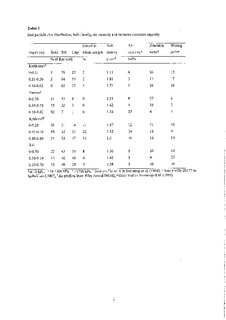| dc.contributor.author | Frøseth, Randi Berland | |
| dc.contributor.author | Bakken, Anne Kjersti | |
| dc.contributor.author | Bleken, Marina Azzaroli | |
| dc.contributor.author | Riley, Hugh | |
| dc.contributor.author | Pommeresche, Reidun | |
| dc.contributor.author | Thorup-Kristensen, Kristian | |
| dc.contributor.author | Hansen, Sissel | |
| dc.date.accessioned | 2017-12-05T14:47:44Z | |
| dc.date.available | 2017-12-05T14:47:44Z | |
| dc.date.created | 2014-01-29T09:59:34Z | |
| dc.date.issued | 2014-01 | |
| dc.identifier.citation | European Journal of Agronomy. 2014, 52 90-102. | nb_NO |
| dc.identifier.issn | 1161-0301 | |
| dc.identifier.uri | http://hdl.handle.net/11250/2469347 | |
| dc.description.abstract | In repeatedly mown and mulched green manure leys, the mulched herbage contains substantial amounts of nitrogen (N), which may only slightly contribute to the following crops’ nutrient demand. The objective of the present work was to evaluate the effect of alternative strategies for green manure management on the yield and N recovery of a subsequent spring barley crop, and their short term effects on soil structure and earthworm populations. A field trial was run from 2008 to 2011 at four sites with contrasting soils under cold climate conditions. We compared several options for on-site herbage management and the application of anaerobically digested green manure herbage. Depending on the site, removal of green manure herbage reduced the barley grain yield by 0% to 33% compared to leaving it on-site. Applying digestate, containing 45% of the N in harvested herbage, as fertilizer for barley gave the same yields as when all herbage was mulched the preceding season. Overall, the apparent N recovery was enhanced from 7% when all herbage was mulched, to 16% when returned as digestate. A positive effect on earthworm density and biomass was seen after one season of retaining mulch material, rather than removing it. Digestate did not affect the earthworm population, but contributed to higher soil aggregate stability. In conclusion, for spring barley production after green manure ley, the digestate strategy increased N recovery and reduced the risk of N losses. The yield of the succeeding barley crop yield was reduced when N in herbage was not returned as mulch or digestate. | nb_NO |
| dc.language.iso | eng | nb_NO |
| dc.publisher | Elsevier | nb_NO |
| dc.rights | Attribution-NonCommercial-NoDerivatives 4.0 Internasjonal | * |
| dc.rights.uri | http://creativecommons.org/licenses/by-nc-nd/4.0/deed.no | * |
| dc.title | Effects of green manure herbage management and its digestate from biogas production on barley yield, N recovery, soil structure and earthworm populations | nb_NO |
| dc.type | Journal article | nb_NO |
| dc.type | Peer reviewed | nb_NO |
| dc.description.version | acceptedVersion | nb_NO |
| dc.rights.holder | © 2013 Elsevier B.V. All rights reserved. | nb_NO |
| dc.source.pagenumber | 90-102 | nb_NO |
| dc.source.volume | 52 | nb_NO |
| dc.source.journal | European Journal of Agronomy | nb_NO |
| dc.source.issue | Part B | nb_NO |
| dc.identifier.doi | 10.1016/j.eja.2013.10.006 | |
| dc.identifier.cristin | 1102787 | |
| dc.relation.project | Norges forskningsråd: 184970 | nb_NO |
| cristin.ispublished | true | |
| cristin.fulltext | postprint | |
| cristin.qualitycode | 1 | |


